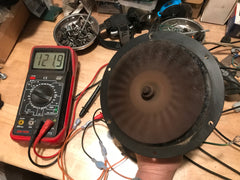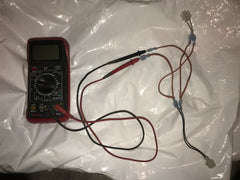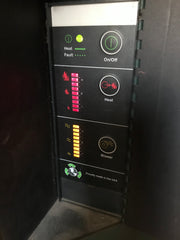So you've recently cleaned your pellet stove thoroughly and your damper is set correctly, but your pellet stove's fire door is dirty and covered in soot. You have to verify that you have proper airflow through the stove. One of the first things you need to check is that the ash pan or ash door is shut properly. In one of the stoves I serviced, a Lennox Whitfield Optima 3, one of the latches on the ash pan was unlatched, which caused the problem. Next you should replace the stove's gaskets if you haven't recently. Door gaskets, exhaust blower gaskets, and pan ash pan/as door gaskets need to be replaced to ensure a proper seal and airflow. They should be replaced about every three years.
If that isn't the issue, then the problem lies with the exhaust blower or control panel. First check if the exhaust blower may be weak. If the exhaust blower fan isn't spinning fast enough, it won't provide enough air to keep the glass clean or ignite the pellets. If that is not the issue, then the control board could also need replacement. The issue may be that the control board does not send proper voltage to the exhaust blower for making the blower run at the proper speeds for each heat level.
Before testing whether the exhaust blower is weak or not receiving proper voltage, it is necessary to clean the blower itself. If the blower is dirty, it may not run properly. To clean and lubricate the blower thoroughly, follow these steps:
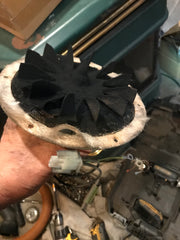
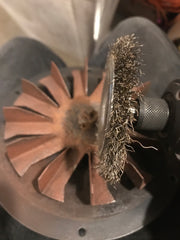

2. Lubricate the blades with dry moly.

3. Lubricate the motor shaft and bearings with Marvel Mystery oil or synthetic bearing oil.
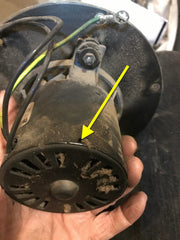
Now you may test to see if the exhaust blower is weak:
Remove the exhaust blower to clean and lubricate and do the spin test. Without any voltage applied to the motor, spin the fan blades with your hands. If it slows down gradually, it passes the test, but it stops abruptly, the bearings in the motors are bad and the motor needs to replaced.
Click here to see video on exhaust blowing spin test
f that is not the issue, then many stoves change the speed of the exhaust blower for each heat level. To test if the control board is sending the correct voltage to the exhaust blower for making the blower run at the proper speeds for each heat level, follow these steps:
1. Start with a bench test.
121.9 VAC is the proper amount for the voltage coming out of the wall. Apply that voltage to the exhaust blower on the bench to assure the blower is working properly at full speed. After plugging the test cord into the wall, if the blades freeze and you hear a hum, that means the windings that form the magnet have broken down and the motor is bad and the exhaust blower needs to be replaced.
2. If that is not the issue, then perform a speed test inside the wood pellet stove. Using a Y style testing jumper, install the exhaust blower back into the stove,
then connect a digital voltage meter into the same plug so the voltages sent to the exhaust blower can be seen on the readout. The molex connectors should be removed and the wires should then be connected to the stove with spade clips for most stoves except Whitfield.
VAC meter with connectors
Note: During the startup cycle, the exhaust blower voltage remains the same, so you may not start the test until the run cycle begins.
If the blower is weak, then it could result a in lack of proper airlflow and the igniter will not ignite the pellets.
3. Press the heat level buttons on the control panel and see if the voltage reads properly for each heat level. Consult your owners manual or service manual for the proper voltages.
By measuring the voltage of a good working stove of the same make and model as your own you can also come up with the correct voltages. If the voltages are not like the ones shown on a working stove or in the owners or service manual, then the control panel will have to be replaced.
There are three heat levels for newer Whitfield stoves. By testing a good stove, I retrieved these numbers. Here is a picture of the stove I tested.
1. Low Heat Level - Blower Voltage from Control Panel = 96.1 VAC
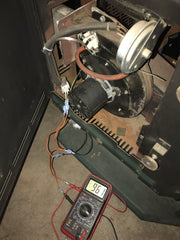
2. Medium Heat Level - Blower Voltage from Control Panel = 113.5 VAC

3. High Heat Level - Blower Voltage from Control Panel = 124.8 VAC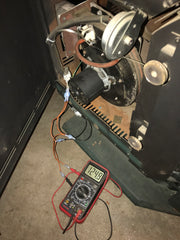
Summary of newer Whitfield exhaust blower voltages with 3 Heat levels.
Bench Test - 121.9 VAC - When plugged into a 120 VAC outlet
Heat Level 1 - 96.1 VAC - Low Heat
Heat Level 2 - 113.5 VAC - Medium Heat
Heat Level 3 - 124.8 VAC - High Heat
I also have the correct voltages for older Whitfield Wood Pellet Stoves with 5 Heat Levels:
Heat Level 1 - 70 VAC
Heat Level 2 - 76 VAC
Heat Level 3 - 79 VAC
Heat Level 4 - 85 VAC
Heat Level 5 - 107 VAC



